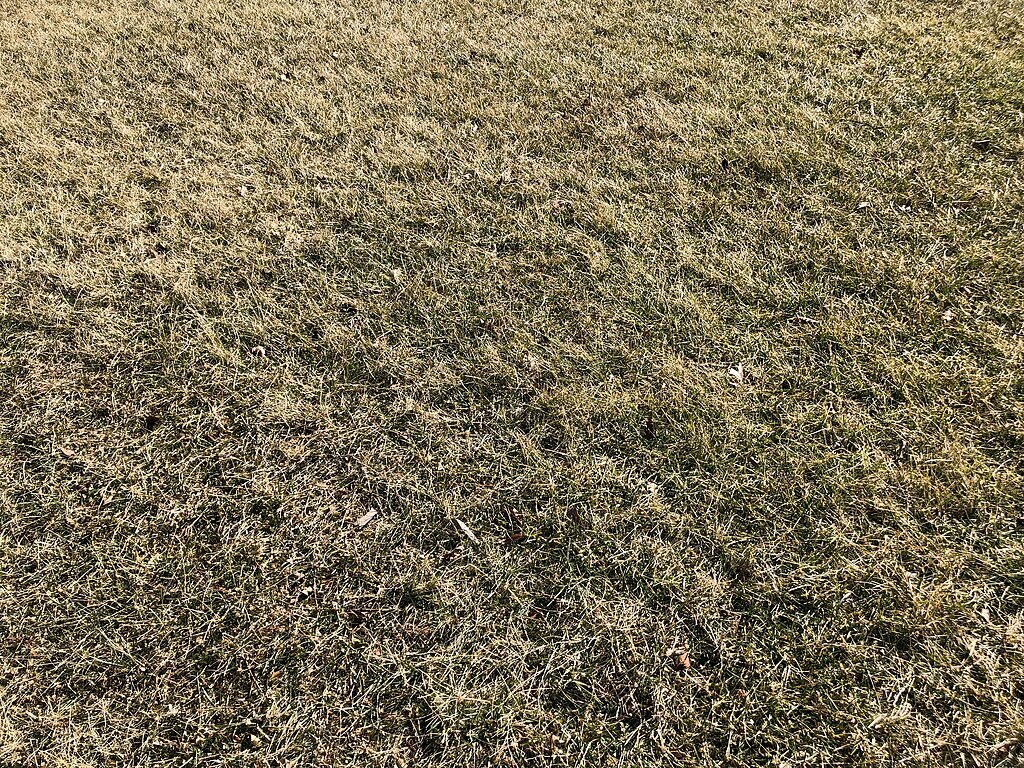As the saying goes, “winter is coming,” and this year is no exception.
While you may prepare for the season by digging winter coats out of the closet, sealing up your home, and sipping on something warm, your lawn is preparing to slip into dormancy for the winter.
While it’s true that dormancy means your grass may not get any greener in the winter, prepping your lawn ahead of the season will help ensure it springs back to life when warmer weather comes back to South Central Pennsylvania.
To stay ahead of the cold nipping at your nose - and your turf - follow these tips for preparing your lawn for winter.
What Happens to Lawns in Winter
Top 5 Tips for Winter Lawn Care in Pennsylvania
How to Avoid Damage to Your Lawn During Winter
FAQs About Winter Grass Care
Trust Good's for Year-Round Lawn Care
What Happens to Lawns in Winter in PA
Before delving into how to winterize your lawn, let’s take a look at what happens to your grass in winter.
What is Dormancy?
In winter, as the air and soil temperatures cool down, your grass stops growing and turns brown - signs that, in other times of the year, may signal troublesome issues such as disease or death.
However, contrary to how it may look, your lawn does not die in wintertime. Rather, it goes into a state of dormancy.
A natural state, dormancy is when the grass goes into “survival mode,” allowing it to conserve nutrients and energy. And, while the grass blades above ground appear dead, the root system underneath the soil is still very much alive, ready to rejuvenate when spring rolls around.
During this time, the turf feeds on the root system’s store of energy and sugars until it can once again create its own when warmer temperatures hit.
How to Prepare Your Lawn for Winter
So, how can you get your yard ready for the long winter season in South Central PA?
In order to help your lawn rest easy during its state of dormancy, there are a few things you as the homeowner can do - and a few items that our team at Good’s can help you tackle.
Top 5 Tips For Winter Lawn Care in Pennsylvania
Here’s a look at the top five ways to prep your lawn for winter.
1) Rake Leaves
In addition to raking up the leaves that have fallen in your yard, it’s essential that you remove them from the lawn. Doing so will help ward off disease and prevent suffocation.
While we don’t provide fall cleanup services, our friendly and knowledgeable technicians are more than happy to offer advice if you have any questions related to cleaning up the leaves and debris in your yard.
2) Practice Proper Mowing
You can continue to mow your lawn throughout the fall season, but it’s important that you set your cutting deck to the correct height.
Before the first snowfall, make sure your lawn is cut to a height of between 2 and 2.5 inches to prevent diseases.
3) Winterize The Lawn
Different from other fertilizer applications, a “winterizer” includes higher levels of nitrogen.
Applying a high-nitrogen fertilizer in late fall provides the plant with something to feed on over the winter and can help give it an extra boost in spring when it comes out of dormancy.
When to Winterize Your Lawn
Typically, you will want to apply a winterizer treatment in November/December before the ground freezes and the snow begins to fall.
However, if you already subscribe to our lawn care program, you can relax knowing that the winterizer treatment is in our technicians’ hands.
4) Aerate & Overseed Your Lawn
If you notice that your lawn exhibits thinning or bare spots, you may want to consider aeration and overseeding. Aeration puts small holes in your yard to reduce compaction and allow air, nutrients, and water to reach the root system.
Overseeding, on the other hand, introduces more grass varieties to your yard to help thicken up bare spots and help your grass stand up to insects, weeds, and diseases in the future.
We find that almost every lawn, regardless of condition, can benefit from this one-two punch in the fall.
5) Ensure Proper Drainage
It’s important to address low-lying spots in your yard to prevent water from pooling, as this can lead to disease infiltration and damage.
Fun Fact: Because aeration reduces the overall level of compaction in your yard, it can help address those tricky spots where water always seems to collect.
How to Avoid Damage to Your Pennsylvania Lawn During Winter
While completing the above tasks is a great start to help ensure your lawn remains healthy throughout the winter and beyond, the work doesn’t stop there.
Here are a few additional ways you can prevent injury to your lawn during the winter season.
Avoid Excessive Foot Traffic
When possible, limit the amount that people and pets traverse your lawn.
Excessive foot traffic can actually harm the crowns of the plants, making it harder for the grass to bounce back in spring, and can cause your lawn to become compacted, meaning that it’s harder for air, water, and nutrients to reach the roots.
Areas of compacted soil can also lead to drainage issues.
Clear Large Snow and Ice Piles
A thick layer of snow or ice can deprive your turf of oxygen, causing it to suffocate and eventually die off.
In addition to inflicting damage to your lawn over time, unaddressed piles of snow and ice also create the perfect environment for disease, such as snow mold, to take over.
There are several types of snow mold that can plague your grass.
- Gray snow mold looks like circular straw-colored or grayish brown spots in the turf that can range in size from 3 inches up to 2 feet. The turf is often matted down as well.
- Pink snow mold also appears as circular patches of dead, matted grass that are reddish-brown in color. In some cases, you can also see a pinkish, cotton-like mycelium at the edges of the spots.
Keeping your lawn free of snow and ice buildup will give it a fighting chance against these winter woes.
Prevent Salt from Getting on the Lawn
Salt from vehicles, sidewalks, and driveways can seep into the lawn, causing stunted growth, browning grass blades, and even death of the grass.
While salt is often an inevitable side effect of winter in South Central Pennsylvania, do your best to keep it from infiltrating the lawn.
Pro Tip: Consider using deicing materials rather than salt. These tend to be labeled as "pet & plant-friendly" and opt for magnesium chloride (MgCl) rather than sodium chloride (NaCl) to melt ice. You can also make use of barriers to keep salt in high-traffic areas from leaching into your lawn.
FAQs About Winter Grass Care in South Central PA
If you’re still wondering about how you can give your lawn a fighting chance this winter, we’re here to answer the most common questions or concerns about lawn prep for winter.
How high should I cut my grass once everything cools down?
Cutting your grass to a height of between 2 and 2.5 inches as we enter the winter season will help prevent diseases and keep your lawn healthy going into dormancy.
When should I winterize my lawn?
You should plan to winterize your lawn in late fall. Think about doing so in November to early December for the best results.
Does a winterizer treatment really help my lawn?
Absolutely. As your lawn prepares to go into dormancy over the winter, giving your grass the extra boost of a winterizer treatment will give it something to feed on over the winter, and it will help it spring to life next season.
Does grass grow in the winter in South Central PA?
In South Central Pennsylvania, grass goes into a state of dormancy in the winter. As a protective measure against harsh conditions, the grass will stop growing during this stage - typically until temperatures reach a consistent warmth in the spring.
Trust Good’s for Year-Round Lawn Care
You may have heard the phrase, “prevention is the best medicine,” and when it comes to taking care of your lawn as we head into wintertime, that sentiment couldn’t ring truer.
We understand that your lawn is much more than simply grass. It’s the groundwork - literally - for the beautiful outdoor space you’ve always imagined.
So why not take care of it as best you can?
At Good’s, we’re ready to be your partner in lawn care with service offerings such as aeration, overseeding, and winterizer treatments, all backed by clear communication and a service guarantee.
If you're in Lancaster, Harrisburg, Lebanon, York, and beyond, let’s work together to transform your lawn into the lush, welcoming space you deserve. Fill out our form for a free quote today.
Image Sources: dormant grass, leaves and rake, snow pile on grass

.png?width=429&height=204&name=Goods%20Tree%20Care%20Logo%202%20(2).png)






.png?width=300&height=143&name=Goods%20Tree%20Care%20Logo%202%20(2).png)